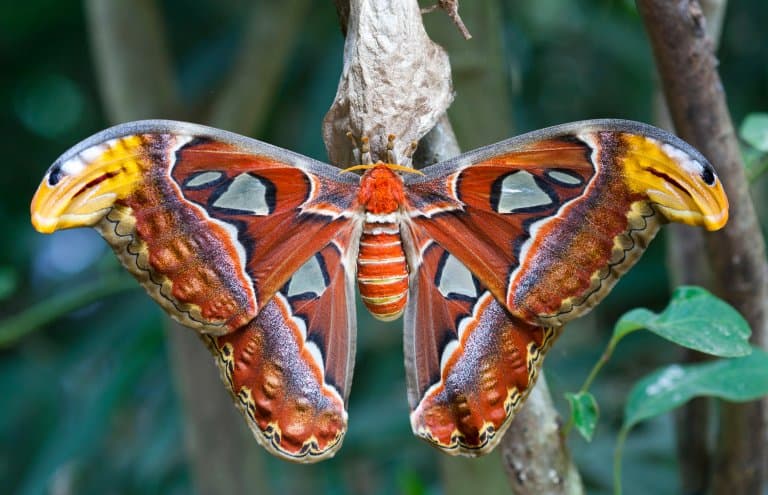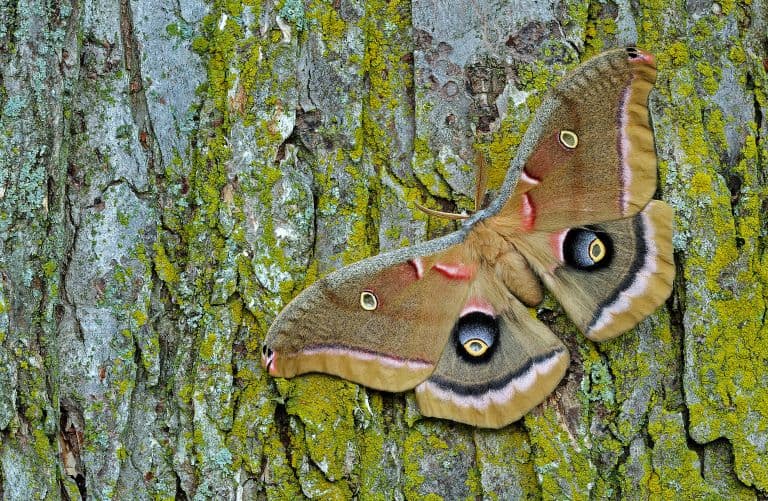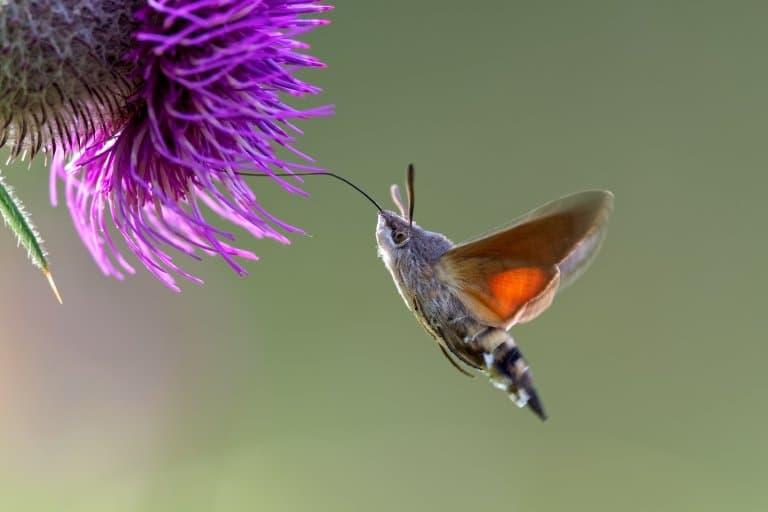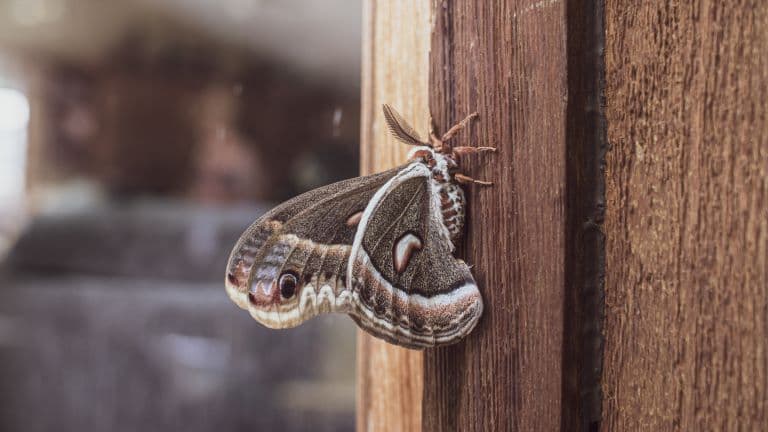Moths Profile
Butterflies are simple. They come out in the daytime, they’re easily grouped into a taxonomic suborder, there are only around 18,000 species of them, and they’re intimidating to nobody. You know where you stand with a butterfly.
Moths, on the other hand, are a mess. Hundreds of thousands of nocturnal species, quite a few that come out in the daytime, hairy ones, bald ones, ones that scream; uncategorisable other than by anything other than a circle inside Lepidopteran Venn diagram that’s labelled “Not butterflies”.

Moths Facts Overview
| Habitat: | All terrestrial spaces with plants |
| Location: | Worldwide |
| Lifespan: | Up to seven years in some species, <1 year in most |
| Size: | From 3mm to 36cm |
| Weight: | Up to 30g |
| Colour: | All colours |
| Diet: | Mostly nectar, some parasitic or blood feeders |
| Predators: | Everything: Bats, birds, mammals, amphibians, reptiles, humans |
| Top Speed: | Possibly as fast as 53 km/h (33mph) |
| No. of Species: | 160,000 + |
| Conservation Status: | All classifications from Least Concern the Critically Endangered (IUCN) |
Moths can do it all. They’re big, they’re small, they suck your blood and pollinate your crops. Moths are so diverse and varied in their behaviours, in part because they’re not a real thing. They’re actually several suborders of lepidopterans, each with its own strengths and weaknesses.
But while we’ve got the umbrella term for them, let’s take a look at just a fraction of that diversity.
Interesting Moths Facts
1. Moths aren’t a thing
Moths are a group of insects that hang over taxonomists like a month-old pile of dirty dishes that nobody has the energy for anymore.
They’re in the Lepidopteran order, with butterflies, but while you can fit the butterfly families into a handy little pocket guide, moths are a pile of unappetising work that will stay there, festering, until someone gets fed up one day and just blasts through it.
So, for now, “moths” are a junk term; something that differentiates the rest of the Lepidopteran order from the one that we have figured out: the butterflies.
But in the future, we’ll likely have to move away from the idea of “Butterflies and Moths” towards a more descriptive “Butterflies and Zeuglopterans, Anglossatas, Heterobathmiinas, and Glossatans”. 1

2. They’re better than butterflies
Butterflies play a huge role in our culture. They’re the mascot for transformation; they teach us the value of persevering through the ugly grub days so that you, too, might finally emerge, spread your beautiful wings, and then hurriedly mate and die. Or, something like that.
They’re also often stunning, and because they’re diurnal, we see more of them. But moths, being so much more prevalent in species, come with greater diversity and tick pretty much all the boxes butterflies do, and then some.
The biggest Lepidopteran is a moth. The heaviest, too. The smallest is also a moth and the one with the longest tongue. Some moths sip gracefully from flowers and others that will drink your blood. Some are parasitic and can scream at you if you pick them up.
Moths can eat your clothes, chew through the timbers of your house, and cannibalise their own mothers.
Moths are everywhere and they do everything. And they’re probably watching you right now. 2

3. Moths grow to more than a foot long
At 36cm across, the Hercules moth, from Australia, is the biggest moth known. These moths have a wing area of around 300cm2 and are around 29g in mothy mass.
Despite this, they can fly, though they don’t have mouths, so they don’t eat. Adult moths like this have one purpose and it is to reproduce before their energy reserves expire and they die. 3
4. They can weigh up to 30g
The heaviest moth is just a little chunkier than the largest and nudges past it by one gram to take the record. The giant wood moth is equally incapable of feeding itself, and so hurries through its week-long lifespan laying as many eggs as possible.
And they can do quite well: 20,000 eggs can come out the back end of one of these flying caterpillars in its short lifetime, some of which will make it all the way to adulthood to repeat the cycle.

5. They can be tiny
The smallest moths, like the Pygmy sorrel moth has a wingspan that’s 1/100th of the largest, at 3mm, and their larvae are responsible for the reddening of dock leaves that they burrow through for sustenance. 4
6. They have long tongues
Flower-feeding moths come in all shapes and sizes, but for flowers with long trumpets, there are moths with corresponding tongues.
Darwin predicted this, by finding a nocturnal flower that he thought could only have been pollinated by a moth. 20 years later, it was discovered. In Madagascar, there are hawk moths with tongues up to 30cm long, specifically evolved to feed from (and in the process, pollinate) the Madagascar orchid, Angraecum sesquipedale.5
7. They can be vampires
Most moths are vegetarian as larvae and if they eat as adults, they primarily feed on nectar. Something like 99% of species wouldn’t know what to do with a cup of blood if you offered it to them, but of course, among the 160,000 species thought to exist, there are exceptions.
Vampire moths are an entire genus of blood-suckers, eight species of which are known to feed on mammals.
But interestingly, they don’t need to. Vampire moths evolved to drink fruit sap by piercing the skin, and, like humans, decided they quite like the taste of flesh, too, despite being quite capable of thriving without it. 6
8. They can scream
The iconic moth from Silence of the Lambs was a Death’s head hawkmoth, so-named for the skull-shaped white marking on its thorax. These moths can enter beehives, where they will steal honey, and are protected from attack by mimicking bee pheromones.
When manhandled by an ignorant animal blogger, they will then emit a high-pitched scream, scaring the crap out of the poor human and being rapidly released.

9. They can be cannibals
Heterogynis penella is a Mediterranean species of moth which sacrifices itself to feed its young. On hatching, the tiny caterpillars will feed on their martyred mother’s corpse, giving them an instant, meaty meal to kickstart their development.
This might seem like an act of ultimate altruism, but evolution didn’t give her a lot of options. Female H. penella have no wings or legs, so they’re hardly moths at all anyway. The mother will pupate inside her cocoon and will lay her eggs in there, trapped inside a cotton prison waiting for their killers to hatch and devour her.
Moths Fact-File Summary
Scientific Classification
| Kingdom: | Animalia |
| Phylum: | Arthropoda |
| Class: | Insecta |
| Order: | Lepidoptera |
| Family: | 125 known |
| Subgroup: | Lepidoptera |
Fact Sources & References
- “ZEUGLOPTERA”, CSIRO Entomology.
- (2018), “Monster Moths! The 3 Biggest Moths In The World”, Australian Butterfly Sanctuary.
- (2020), “Giant Wood Moth”, Australian Museum.
- “Enteucha acetosae”, UK moths.
- “Xanthopan morganii praedicta”, Britannica.
- Kevin Fitzgerald (2015), “Vampire Moths Suck the Blood of Vertebrates, Including Humans”, entomology today.
